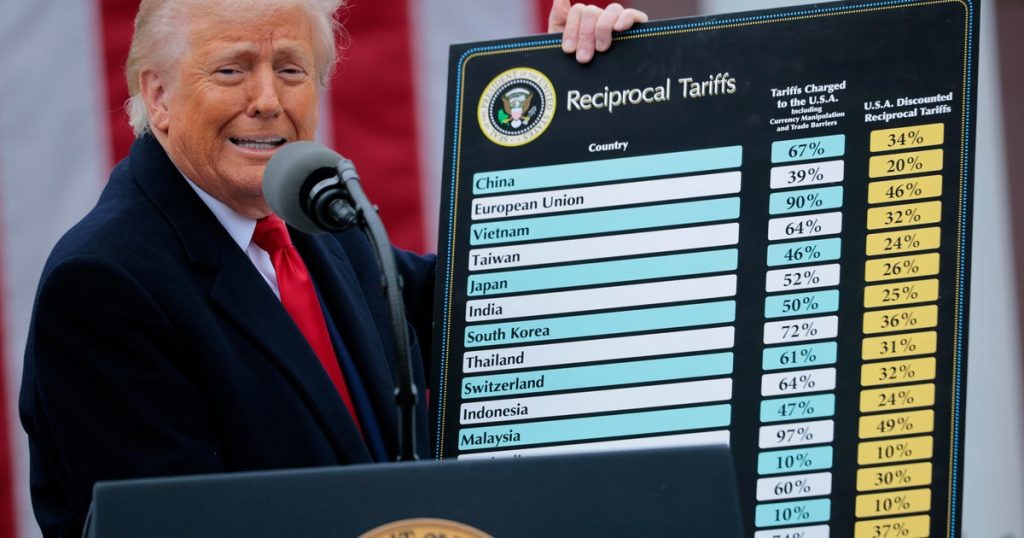A 90-day freeze on sweeping U.S. tariffs is nearing its expiration date on July 9, creating economic uncertainty as the administration seeks to reform global trade terms. The implications of these tariffs extend to millions of consumers and businesses, with experts warning of possible inflation and the threat to smaller enterprises. As the deadline approaches, the administration promotes new trade agreements with nations, all while the fate of other deals remains unclear.
| Article Subheadings |
|---|
| 1) Background on the Tariff Situation |
| 2) Predictions for the Upcoming Deadline |
| 3) Potential Outcomes Post-Deadline |
| 4) The Impact on Consumers and Businesses |
| 5) Future Trade Relations and Legal Challenges |
Background on the Tariff Situation
The initial imposition of tariffs was announced on April 2, a day President Donald Trump referred to as “Liberation Day.” The tariffs, which affect a range of imports, were portrayed as a measure to protect U.S. industries and consumers. Under these tariffs, imports from various countries would face a base rate of 10%, with some nations such as Cambodia facing much higher penalties of 49%. The backlash from critics highlights concerns that these tariffs will lead to higher prices for U.S. consumers.
Predictions for the Upcoming Deadline
As the July 9 deadline approaches, the Trump administration has been vocal about its progress in negotiating new trade agreements with countries including China, the U.K., and Vietnam. However, experts caution that the complexity involved in finalizing trade deals may result in possible extensions or changes to tariff proposals. Clark Packard, a trade policy expert, has articulated the view that negotiations often take much longer than anticipated.
Potential Outcomes Post-Deadline
Should the U.S. administration fail to strike new agreements by the deadline, elevated tariffs will automatically take effect, impacting billions in foreign imports. Legal experts like David Murphy have highlighted the consequences of inaction, warning that higher rates could cripple trade relationships with key partners. An essential question remains: which countries will either secure negotiations in time or face the steep consequences of tariffs?
The Impact on Consumers and Businesses
The ramifications of these tariffs could be profound for everyday Americans. Experts warn that increased tariffs could lead to further inflationary pressures, thereby eroding purchasing power. Many businesses, particularly small enterprises, may face insurmountable costs and operational challenges under an evolving trade environment. Patrick Childress forecasts that businesses may stymie growth and investment as the uncertainty surrounding potential tariffs causes hesitation in long-term planning.
Future Trade Relations and Legal Challenges
While new trade regulations attempt to create a more favorable business landscape, they also face significant hurdles. Legal experts point out that much of the administration’s trade strategy may unravel if recent court rulings deem many tariffs illegal. This heightened scrutiny complicates the already intricate landscape of international trade relations, leading many to question the future trajectory of U.S. export policies.
| No. | Key Points |
|---|---|
| 1 | The 90-day tariff freeze is set to expire on July 9. |
| 2 | Experts predict economic repercussions including inflation and loss of small businesses. |
| 3 | Negotiations with specific nations may lead to new agreements or extended deadlines. |
| 4 | Failure to secure agreements will result in automatic increases in tariffs on imports. |
| 5 | Legal challenges may impact the enforcement of tariffs, complicating trade relations. |
Summary
The expiration of the tariff freeze poses significant challenges and uncertainties for U.S. consumers and businesses, as the administration navigates complex trade negotiations. With economists predicting adverse effects like inflation and operational difficulties for smaller enterprises, the stakes are high as the country approaches the July 9 deadline. The outcome of these negotiations will shape the landscape of American trade relations for years to come.
Frequently Asked Questions
Question: What are the current U.S. tariffs on imports?
The current tariffs include a baseline of 10% on various imports, with some countries facing considerably higher rates based on ongoing negotiations.
Question: How might tariffs impact small businesses?
Increased tariffs may lead to rising operational costs, thereby threatening the viability of small businesses that cannot absorb these additional expenses.
Question: What happens if no trade deals are reached by the deadline?
If no agreements are secured, the higher tariffs will automatically go into effect, significantly increasing costs on a wide range of imported goods.


